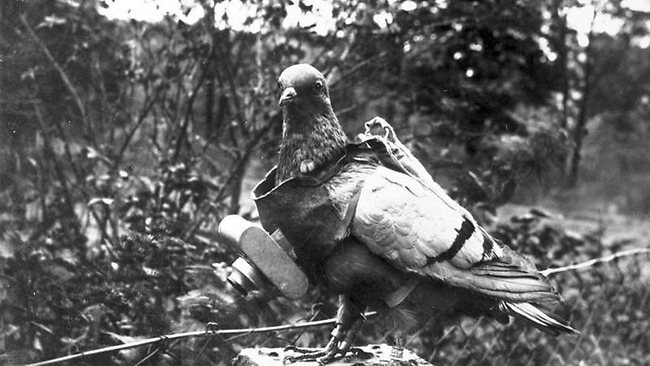Data Transfer using Avian Carriers
Traditional methods of data transmission are often limited by bandwidth and latency constraints. To overcome these limitations, researchers have explored unconventional approaches, one of which is IP over Avian Carriers.

Introduction
In the era of ever-increasing data transfer demands, traditional methods of data transmission are often limited by bandwidth and latency constraints. To overcome these limitations, researchers have explored unconventional approaches, one of which is IP over Avian Carriers. This article delves into the technical aspects of this unique method and explores its potential applications.
Background
IP over Avian Carriers, also known as IPoAC, is a humorous term coined to describe the concept of using birds as a means of data transfer. While it may seem far-fetched, the idea is rooted in the concept of utilising the natural capabilities of birds for long-distance travel.
How IPoAC Works
The basic principle behind IPoAC involves attaching small, lightweight storage devices, such as memory cards or USB drives, to carrier pigeons. These birds are then trained to fly between two designated locations, acting as data couriers. The data is stored on the storage devices and physically transported by the birds.
Once the birds reach their destination, the storage devices are retrieved and the data is extracted and processed. The data can then be transmitted to its intended recipient using traditional networking protocols.
Advantages of IPoAC
Bandwidth
One of the primary advantages of IPoAC is its potential for high bandwidth. While individual carrier pigeons may not have large storage capacities, a flock of pigeons can collectively carry a significant amount of data. This distributed approach allows for parallel data transfer, resulting in higher overall bandwidth compared to traditional methods.
Latency
IPoAC also offers the potential for low latency data transfer. As carrier pigeons can fly at impressive speeds, especially over short to medium distances, the physical transportation of data can be faster than transmitting the same data over a network connection. This can be particularly advantageous in scenarios where minimising latency is critical, such as real-time data processing or disaster recovery.
Resilience
In situations where traditional network infrastructure is unavailable or compromised, IPoAC can provide an alternative means of data transfer. Birds are capable of navigating through difficult terrains and can reach remote locations that may be inaccessible to traditional communication methods. This resilience makes IPoAC a viable option for disaster-stricken areas or remote research outposts.
Challenges and Limitations
While IPoAC presents several advantages, it is not without its challenges and limitations.
Security
One of the primary concerns with IPoAC is security. As the data is physically transported by birds, there is a risk of interception or tampering during transit. Appropriate encryption and security measures must be implemented to ensure the confidentiality and integrity of the data being transferred.
Reliability
The reliability of IPoAC heavily relies on the behavior and well-being of carrier pigeons. Factors such as weather conditions, bird health and potential bird loss can impact the successful delivery of data. Redundancy measures, such as using multiple birds or implementing error correction mechanisms, may be necessary to mitigate these risks.
Scalability
While IPoAC can provide high bandwidth and low latency for specific use cases, it may not be scalable for large-scale data transfers. The logistics of managing a fleet of carrier pigeons and coordinating their flights can become complex and impractical for extensive data transfer requirements.
Potential Applications
Despite its limitations, IPoAC has potential applications in various domains:
- Remote Sensing: IPoAC can be used to collect sensor data from remote locations, such as wildlife monitoring stations or weather observation posts.
- Disaster Recovery: In emergency situations where traditional communication infrastructure is compromised, IPoAC can serve as a reliable means of data transfer.
- Data Distribution: IPoAC can be used in scenarios where distributing large datasets to multiple locations is required, such as scientific research collaborations.
Conclusion
IP over Avian Carriers may be a whimsical concept, but it highlights the ingenuity of exploring unconventional methods for data transfer. While it may not be suitable for all scenarios, IPoAC offers unique advantages in terms of bandwidth, latency and resilience. As technology continues to evolve, it is essential to consider innovative approaches like IPoAC to address the ever-growing demands of data transfer.



